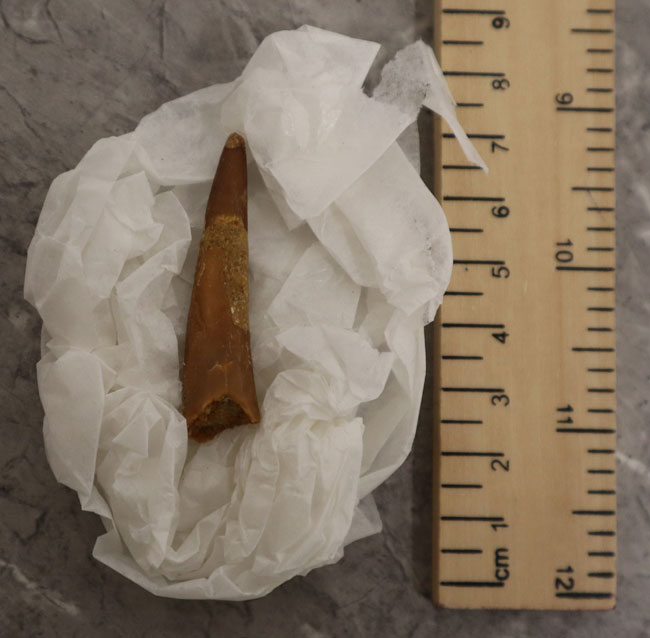World’s Oldest Evidence of Toothache Revealed by New Research
Dentists Had Not Evolved in the Palaeozoic
A team of North American palaeontologists have discovered the world’s oldest case of toothache in the fossilised jaws of an ancient reptile that lived in the Permian geological period. Computerised tomography has revealed the tell-tale signs of an extensive abscess on the lower jaw of this unfortunate creature, the infection probably led to this reptile loosing a lot of its teeth. The fossil provides evidence of dental caries in an omnivore and reminds our species (also omnivores) to look after our teeth.
Oldest Evidence of Toothache
The fossil is from a reptile known as Labidosaurus hamatus (lipped lizard), from the Lower Permian of the United States (holotype material for this species found in the Arroyo Formation of Baylor County, Texas), this one metre long reptile, was formally named and described in 1896 by that eminent American palaeontologist Edward Drinker Cope (1840-1897).
When the research team, led by Robert Reisz (Chair of the Dept. of Biology at the University of Toronto Mississauga) undertook a CT scan of the fossilised lower jaw of this anapsid reptile, they discovered evidence of a substantial infection that has caused the loss of several teeth. The upper jaw (premaxilla) of these primitive reptiles was hooked, it had a distinct kink in it, the scientists discovered that once the jaw bones in question were studied, a sorry tale of tooth decay and tooth loss was revealed.
Palaeontologists Can Tell a Lot from a Single Tooth

Palaeontologist can tell a lot from a single tooth, in this case a tooth of a pterosaur from Morocco. Picture credit: Robert
Diagrams show several views and scans of the fossilised jawbone revealing substantial tooth loss and the site of a nasty infection (abscess) in the bone.
Infection in the Jaw
The team’s analysis, which is written up in the scientific journal “Naturwissenschaften” shows the advantages and disadvantages of various evolved solutions when it comes to dentition (teeth). These reptiles had adapted to life on land, and in doing so had given up the more primitive dental pattern of having teeth that were loosely attached to the jaw and continuously replaced, as is seen today in sharks for example.
Scientists believe that these types of reptiles were predominantly plant-eaters, but also partial to the occasional insect or small creature that they could catch – essentially omnivores. The change to a more vegetarian diet led to the evolution of stronger teeth more firmly attached to the jaws. Better, stronger, teeth led to more efficient biting and some grinding of plant matter in the mouth prior to swallowing. These processes would have helped these creatures extract more nutrition from the food they ate. However, a drawback to this was that infections and tooth decay in more semi-permanent teeth was likely to occur.
Dr Reisz and his team suggest that as these teeth were worn, dental nerves would have been exposed to bacterial infection and tooth loss was more likely, than in those animals such as many diapsid reptiles (including dinosaurs) that shed worn teeth and rapidly replaced them with new ones erupting from the jaw bones.
These findings may have a parallel with the evolution of mammals, including our own species. Mammalian jaws are relatively simple, when compared to the jaws of many reptiles. The mammal lower jaw is made up of one single bone the dentary, they are synapsids, named after an opening in the skull bones behind the orbit (eye). This synapsid hole may have evolved to provide new attachment sites for jaw muscles as these creatures evolved a more effective and powerful bite. Reptiles such as L. hamatus are members of the anapsid type. They have no skull openings behind the eye socket. The earliest reptiles were anapsid forms, they are represented today by the Chelonians (turtles and tortoises etc). With a more simple jawbone, complex teeth evolved to enable synapsids to process food efficiently. Such an evolutionary investment in tooth design, probably meant a trade off – they could not be so easily shed and replaced, as in diapsid reptiles for instance.
Dr Reisz commented:
“Our findings suggest that our own human system of having just two sets of teeth, baby and permanent, although of obvious advantage because of its ability to chew and process many different types of food, is more susceptible to infection than that of our distant ancestors that had a continuous cycle of tooth replacement.”
Different evolutionary solutions to handling tough land plants as food may have had an impact on reptile diversity, this would have affected those descendants of reptiles, the birds, who incidentally lost all their teeth in an adaptation to powered flight, and the mammals including us humans.
If you don’t want to end up with dental caries and an infected mouth best to take the advice of your dentist, after all, there were no dentists around in the Palaeozoic to assist poor Labidosaurus.
For replicas and models of prehistoric animals from the Permian: CollectA Age of Dinosaurs Popular Models.

